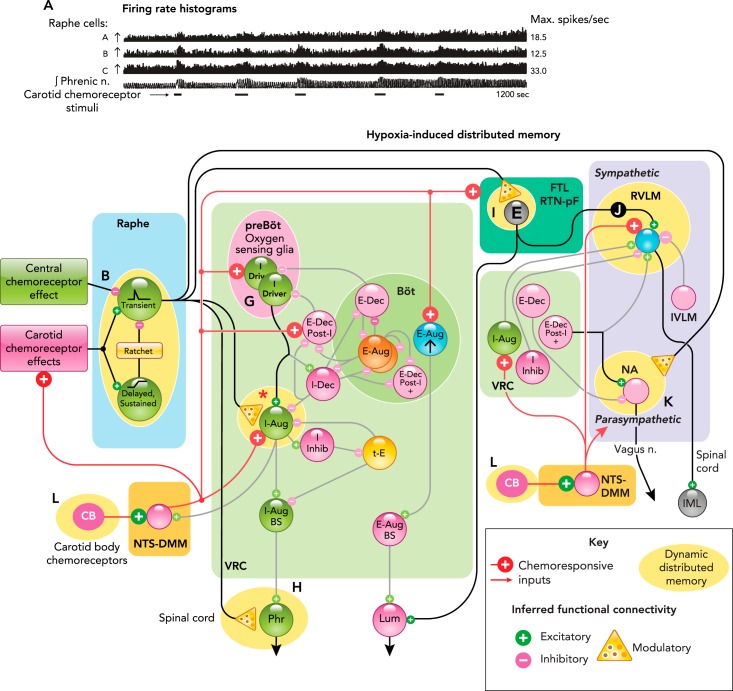FIGURE 3.
Distributed network sites for induction and expression of carotid body- and intermittent hypoxia-induced long-term facilitation
A: responses of raphe neurons and integrated phrenic nerve activity during repeated selective stimulation of carotid chemoreceptors and induction of long-term facilitation (LTF). Figure is derived from Ref. 174 with permission from Respiration Physiology. B: raphe circuit mechanism proposed to contribute to ratchet-like incremental induction of LTF (171, 172). C: firing rate histogram and by-cycle rate plots show opposite responses of a raphe neuron to selective stimulation of central and peripheral carotid chemoreceptors. Figure derived from Fig. 2A, C in Ref. 183 with permission from The Royal Society. D: increased number of black bins in the top right quadrant along the diagonal of the joint peri-stimulus time histogram (JPSTH) documents a significant increase in spike synchrony and effective connectivity for two raphe cells following induction of LTF. Figure adapted from Fig. 4A in Ref. 171 with permission from Journal of Physiology. E: offset cross-correlogram peak shows effective connectivity between a pre-Bötzinger I-Driver neuron and a VRG inspiratory target cell; binwidth = 0.5 ms, 8,216 trigger neuron spikes, 4,569 target neuron spikes. F: non-uniform distribution of statistically significant black bins along the diagonal of the JPSTH for the same neurons shown in E documents enhanced effective connectivity between this pair of neurons following induction of LTF. Figure derived from Fig. 3, B and C, in Ref. 171 with permission from Journal of Physiology. G–L: additional sites for distributed LTF expression following repeated episodes of intermittent hypoxia. See text for details.

